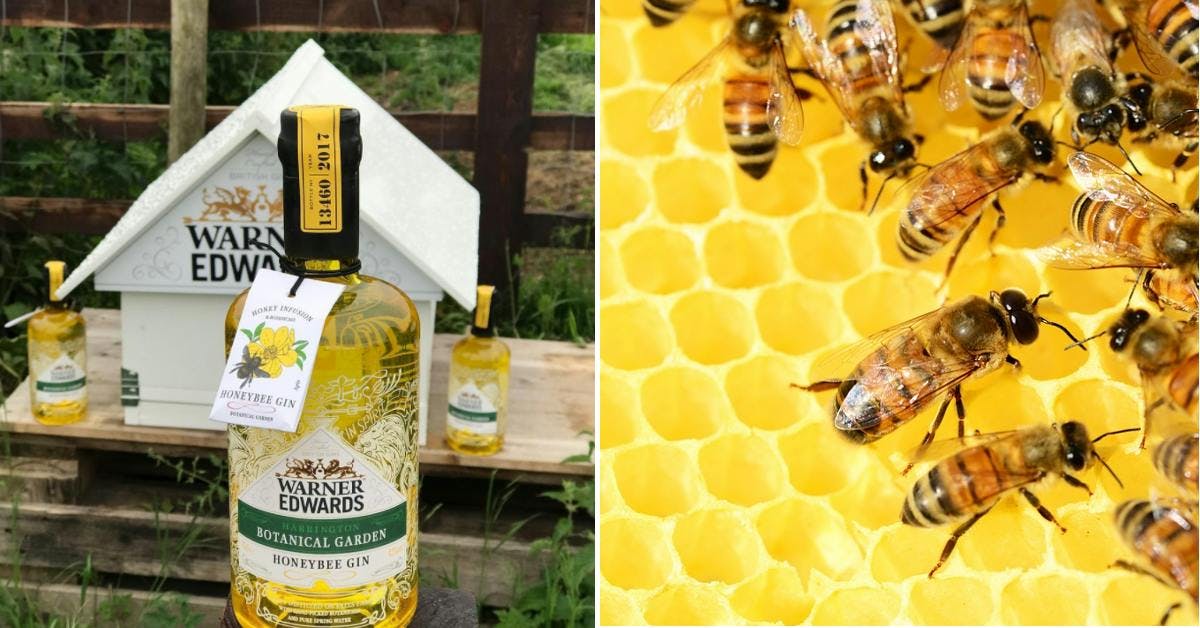
Love Warner Edwards Honeybee Gin? 5 ways YOU can help save the bees
Honeybees played an important role in the making of June’s amazing Gin of the Month, but they have an even more important job in keeping the ecosystem of the UK alive and well. But these amazing multi-taskers are in more danger every year. Here’s how you can help:
1. Understand the integral role bees play in the environment…
Without honeybees, it’s likely that our ecosystem as we know it would simply collapse.
It’s well known that bees drift adorably from flower to flower, but they’re actually doing important work while they’re at it.
Their high stamina and ability to travel great distances makes them a valuable ally to plants of all kinds, as they carry pollen with them on every journey.
This good work helps plants reproduce, ensuring that we have lots of beautiful vegetables, fruits and flowers to maintain a balanced ecosystem.
2. … and why they’re under threat.
While conspiracy theories for the disappearance of bees abound, it isn’t your mobile phone behind the disappearance of this crucial species. The truth is much simpler, but at the same time much harder to solve: new methods of farming are making it hard for bees to sustain themselves.
While pesticides help farmers increase their yields and keep their crops healthy, they also greatly diminish the number of wildflowers and plants growing on and near wide swaths of land in the UK.
Essentially, this means that there isn’t enough pollen to support a healthy population of bees. Most UK species have been in decline in recent years, and two have gone completely extinct in the years since 1940.
A sad state of affairs, to be sure, but we can all play a role in making it right.
3. Help the bees you see…
Bees aren’t aggressive, which means that if you leave them alone they’ll do the same.
Unless you or a loved one is severely allergic to bees, the best strategy when you see one is to live and let live.
Spotting a bee in your back garden can be a great opportunity to teach your children and family what an important part of the ecosystem they are, and how the best way to interact with nature is to observe and appreciate it from a distance.
If a bee colony has set up an unwelcome nest in your garden, there are ways of getting rid of it that don’t harm the bees or yourself. Nests only stay active for a few months, so set up a perimeter around the area and keep a careful eye on it.
When you’re sure that bees are no longer entering and exiting the nest, seal up the entrance. The queen bee won’t return the next year, so your garden will be bee-free without having a negative impact on the greater population.
4. … and the generations to come.
If you’re happy to help our busiest, buzziest friends there are a lot of ways you can support bee population growth.
First, try turning your garden into a bee sanctuary. By planting the right flowers, you can encourage bees to make a home in your patch, which helps them stay safe and well-fed. Avoid flowers whose petals form long, narrow tunnels that bees struggle to navigate, and certainly skip the harsh pesticides, which often count bees amongst their casualties.
The same goes for any agricultural land you might be managing; bees are amazing pollinators, and according to the Bumblebee Conservation Trust can even increase yields of crops like tomatoes and rapeseed. To learn more about how to manage your garden in a bee-friendly way, visit www.bumblebeeconservation.org.
You can also encourage bees to build a nest in your garden. All you need is a flowerpot, a piece of tile and a bit of tube. Just sink the upturned flowerpot into the ground, cover up the drainage holes with the tile and run the hose underground to the pipe, making sure to add drainage holes. Fill the pot with a generous handful of nesting material, like guinea pig bedding. And there you have it: a cosy honeybee home!
5. And most importantly, get involved!
If you don’t have a garden or DIY bee nest building isn’t quite your scene, there’s still a lot you can do to support bee populations in the UK. Conservation organisations are always looking for volunteers, so check out how you can help.
Whether you’re free one weekend to man a stall at an event, can lend a hand with fundraising or have time to help track honeybee populations in your area, there are all kinds of ways to get involved.
To learn more about helping support bee populations in the UK, and donate to this great cause, visit www.bumblebeeconservation.org.







